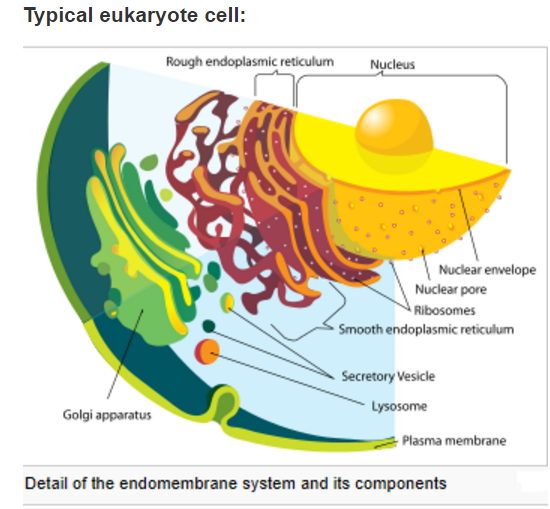凋亡诱导剂 细胞凋亡的激活和抑制
Apoptosis Inducers Activation and Inhibition of Apoptosis
已经在哺乳动物细胞中鉴定了几种诱导细胞凋亡的机制。这些机制包括导致线粒体(mitochondria)扰动的因子,导致细胞色素C(Cyto C)的泄漏或直接激活死亡受体家族成员(Fas)的因子。 Fas是肿瘤坏死因子(TNF)受体超家族的成员,超家族是跨膜受体家族,包括神经营养因子受体(p75NTR),TNF-R1和多种其他细胞表面受体。 Fas配体(Fas L)通过诱导Fas的三聚化将信号传递给靶细胞上的Fas。 Fas的激活通过Fas和FADD的死亡结构域之间的相互作用引起具有死亡结构域(FADD)的Fas相关蛋白的募集,并且随后通过死亡效应结构域(DED)之间的相互作用促进caspase-8与FADD的结合。 FADD和pro-caspase-8导致caspase-8活化。caspase-8的激活导致其他caspase的活化,实际上开始最终导致细胞凋亡的caspase级联反应。 Caspase-8激活也可激活Bid,从而激活凋亡程序。 Fas诱导的细胞凋亡可以通过FLICE抑制蛋白(FLIP),Bcl-2或细胞因子反应调节剂A(CrmA)在几个阶段有效阻断。此外,caspase-9激活caspase-3可被凋亡蛋白抑制剂(IAPs)阻断。此外,蛋白激酶Akt可被各种生长因子激活,其活性可被PTEN阻断。 Akt通过两种不同的途径促进细胞存活。 Akt通过磷酸化Bcl-2家族成员Bad来抑制细胞凋亡,Bad然后与14-3-3相互作用并从Bcl-xL解离以允许细胞存活。或者,Akt激活IKK-α,最终导致NF-κB活化和细胞存活。促凋亡Bcl-2家族成员,如Bax和Bak可以促进线粒体通透性,而Bcl-2可以抑制其作用。在线粒体通透性增加后,凋亡因子从线粒体膜间隙释放并泄漏到胞质溶胶中。一个因素是细胞色素C,其诱导蛋白酶激活剂(caspase)的释放,其最终通过核损伤(DNA片段化,DNA突变)导致细胞凋亡。此外,Smac / Diablo被释放并且可以阻止IAP对caspase活性的抑制。线粒体通透性还与活性氧(ROS)的产生增加有关,其在细胞凋亡的降解阶段(即质膜改变)中起作用。
Apoptosis Inducers Activation and Inhibition of Apoptosis
Several mechanisms have been identified in mammalian cells for the induction of apoptosis. These mechanisms include factors that lead to perturbation of the mitochondria leading to leakage of cytochrome c or factors that directly activate members of the death receptor family. Fas is a member of the tumor necrosis factor (TNF) receptor superfamily, a family of transmembrane receptors that include neurotrophin receptor (p75NTR), TNF-R1, and a variety of other cell surface receptors. Fas Ligand (Fas L) transmits signals to Fas on a target cell by inducing trimerization of Fas. Activation of Fas causes the recruitment of Fas-associated protein with death domain (FADD) via interactions between the death domain of Fas and FADD and is followed by pro-caspase-8 binding to FADD via interactions between the death effector domains (DED) of FADD and pro-caspase-8 leading to the activation of caspase-8. Activation of caspase-8 leads to the activation of other caspases, in effect beginning a caspase cascade that ultimately leads to apoptosis. Caspase-8 activation can also activate Bid, leading to activation of the apoptotic program. Fas-induced apoptosis can be effectively blocked at several stages by either FLICE-inhibitory protein (FLIP), by Bcl-2, or by the cytokine response modifier A (CrmA). In addition, activation of caspase-3 by caspase-9 can be blocked by inhibitor of apoptosis proteins (IAPs). Moreover, the protein kinase, Akt, can be activated by various growth factors and its activity can be blocked by PTEN. Akt functions to promote cell survival through two distinct pathways. Akt inhibits apoptosis by phosphorylating the Bcl-2 family member Bad, which then interacts with 14-3-3 and dissociates from Bcl-xL allowing for cell survival. Alternatively, Akt activates IKK-α that ultimately leads to NF-κB activation and cell survival. Proapoptotic Bcl-2 family members, such as Bax and Bak can promote mitochondrial permeability, while Bcl-2 can inhibit their effects. Upon mitochondrial permeability, apoptogenic factors are released from the mitochondrial inter-membrane space and leak into the cytosol. One factor is cytochrome c, which induces the liberation of protease activators (caspases) that ultimately lead to apoptosis through nuclear damage (DNA fragmentation, DNA mutations). In addition, Smac/Diablo is released and can block IAP inhibition of caspase activity. Mitochondrial permeability is also related to the increased generation of reactive oxygen species (ROS), which plays a role in the degradation phase of apoptosis (i.e. plasma membrane alterations).

.png)